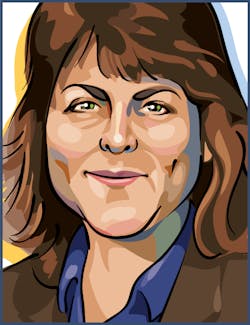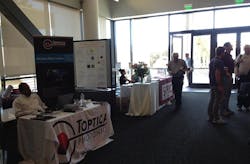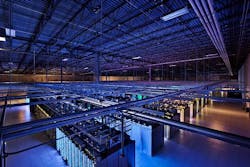
After the Day 1 presentations at the 2013 Stanford Photonics Research Center (SPRC) Symposium on X-rays and gravity waves, the Day 2 presentations shifted focus to biophotonics—a rapidly growing discipline for Stanford University that, to the dismay of some long-entrenched professors keen on keeping the physical sciences alive, is "stealing" resources in the way of laboratory space and equipment away from more fundamental physics and optics programs. As one professor said, "Stanford is going where the money is" and clearly, the R&D money today is heavily focused on biomedical optics.
The morning session included four presentations on stem cells and the miraculous things that they could soon be enabling for the aging population, such as being coded to grow any body part that may fail in a human being. The science is making tremendous strides as imaging equipment improves, on both the cellular level and at the molecular level. M Squared lasers, which had a small booth in the lobby of the Li Ka Shing Center in which the symposium was held (see below) described this era as the "molecular age", meaning lasers and imaging capabilities are allowing scientists to understand the atomic and molecular signaling pathways that allow cells to regenerate, with "leader" cells instructing "follower" cells where to move and how to grow.
After an introductory overview of "Optical and Electronic Approaches to Restoration of Sight to the Blind" from Stanford's Daniel Palanker, including progress in retinal prosthesis and optogenetics, five presentations (primarily from Stanford researchers and one from the University of Edinburgh) described how intricate studies of pluripotent stem cells—via optical methods such as bright red excitable fluorescent proteins—are improving the future prospects for genetic disease understanding and treatment. In addition to the tremendous detail seen using 3D structured illumination such as actin fingers that allow leader cells to pull follower cells along, single-objective imaging allows 3D particle localization, a single-molecule optical trap from Stanford's Quan Wang can be used to study the hybridization kinetics of DNA molecules, dual-axis confocal microscopy is improving the determination of tumor margins for brain-tumor resection as detailed by SUNY's Jonathon Liu, and surface-enhanced Raman scattering (SERS) nanoparticles are improving colon cancer detection with 1.6 mm spatial resolution using a fiber-bundled endoscope.
While biophotonics continues to advance on a daily basis, a very powerful tool that can further biomedical disease analysis and treatment (especially in third world countries without access to laboratory facilities) is now at your fingertips—your smart phone. Laser Focus World continually reports on the latest cell-phone photonic gadgets such as clip-on microscopes and spectroscopic analysis tools. But without the datacenter, the smart phone and its ever-growing bandwidth hunger could not be quenched. In essence, the datacenter is where communications begin and end.
Kicking off the afternoon datacenter presentations was Hong Liu from Google, who co-authored our December 2012 Laser Focus World feature article entitled "Optical technologies scale the datacenter" (see the image below from that feature, which indicates the scope of a datacenter's interior). Liu gave some astounding statistics of Internet use, such as the fact that Google must support more than 1 billion searches per day, that YouTube posts 72 hours of video each minute, and that last month, mobile search exceeded desktop search at Google for the first time. Liu said that while integrated optics in the way of transceivers were making their way into between-rack architectures within datacenters, that current technology would support a 7-8 nm node through 2018/2019. After that, she says low-power Si or InP modulators and new modulation formats and digital signal processing would be needed; basically, WDM and high-order modulation are key to meeting datacenter bandwidth growth needs.
Liu's presentation was followed by "Evolution of Optical Interfaces for Data Centers" by Finisar's Chris Cole, who joked that his company is one of many component companies making fabulously good optoelectronic devices with ridiculously huge bandwidth capabilities and selling them on the cheap to Google so they can make a ton of money. That sentiment was echoed by UCSD's George Papen in the final presentation of the day entitled "Hybrid Datacenter Networks with Microsecond Optical Circuit Switches." Papen's statistic that a typical datacenter with 65,000 nodes requires a total of more than 393,000 10G transceivers was mind-boggling. Too bad margins aren't higher for those struggling communications component vendors!

Gail Overton | Senior Editor (2004-2020)
Gail has more than 30 years of engineering, marketing, product management, and editorial experience in the photonics and optical communications industry. Before joining the staff at Laser Focus World in 2004, she held many product management and product marketing roles in the fiber-optics industry, most notably at Hughes (El Segundo, CA), GTE Labs (Waltham, MA), Corning (Corning, NY), Photon Kinetics (Beaverton, OR), and Newport Corporation (Irvine, CA). During her marketing career, Gail published articles in WDM Solutions and Sensors magazine and traveled internationally to conduct product and sales training. Gail received her BS degree in physics, with an emphasis in optics, from San Diego State University in San Diego, CA in May 1986.

